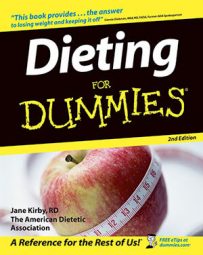The USDA Food Pyramid recommends that you include 2-3 servings of meat, poultry, eggs dried beans or nuts in your daily diet. Such foods contribute important nutrients, such as protein, calcium, iron, and zinc.
In the USDA view of the food world, meats, beans, nuts, and eggs are grouped together. They all do have higher amounts of protein than other foods in the pyramid, but that’s where critics say the similarities end.
Red meat has been associated with increased cancer risk, and some other meat, such as cold cuts, are particularly high in fat. New scientific evidence shows that nuts have vitamin E and beans have fiber that makes them more unique, not similar to meat. Plus, the fat in fish trumps the fat in red meat and chicken.
Two to three ounces of meat, poultry, or fish (about the size of your palm) is an adequate amount of protein for a meal. Choose the select grades of beef, veal, and lamb to make sure that you get the least-marbled meats.
Also, opt for lean cuts of meat, such as those from the round, loin, or leg (beef sirloin, ground round, or top round; pork tenderloin or loin chop; or leg of lamb). Select lean and extra-lean ground beef. Unless you’re eating fat-free cold cuts, be extra cautious in the deli; many have more fat than lean meat per slice. Most fish are naturally lean.
When meat is your protein of choice, trim all visible fat before cooking and remove the skin from poultry before eating. And use lower-fat cooking methods, such as roasting, broiling, and grilling instead of frying, sautéing, or pan-frying. Have fish a minimum of one day a week, and make at least one meal meatless. Dried beans and peas (legumes) are a good substitute for meat in this group.
Check out these options to meet your protein needs:
Meats (each counts as 1 serving):
2 to 3 ounces cooked lean beef, pork, veal, or lamb without bone
2 to 3 ounces cooked poultry without skin or bone
2 to 3 ounces cooked fish without bone
2 to 3 ounces drained, canned fish
Meat alternates (each counts as 1 ounce, about 1/3 serving):
1 egg (yolk and white) or 2 egg whites
1/2 cup cooked dry beans (if not counted as a vegetable)
2 tablespoons peanut butter
1/4 cup seeds, such as sunflower or pumpkin seeds
1/3 cup nuts, such as walnuts, pecans, or peanuts
1/2 cup baked beans
1/2 cup tofu
Meat and fish products (each counts as 1 ounce, about 1/3 serving):
1 ounce lean ham or Canadian bacon
1 1/2 frankfurters (10 per pound)
1 frankfurter (8 per pound)
1/4 cup drained canned salmon or tuna
1/3 cup drained canned clams or crabmeat
4 Pacific oysters or 11 Atlantic oysters
6 medium shrimp
1/4 cup drained canned lobster or shrimp

